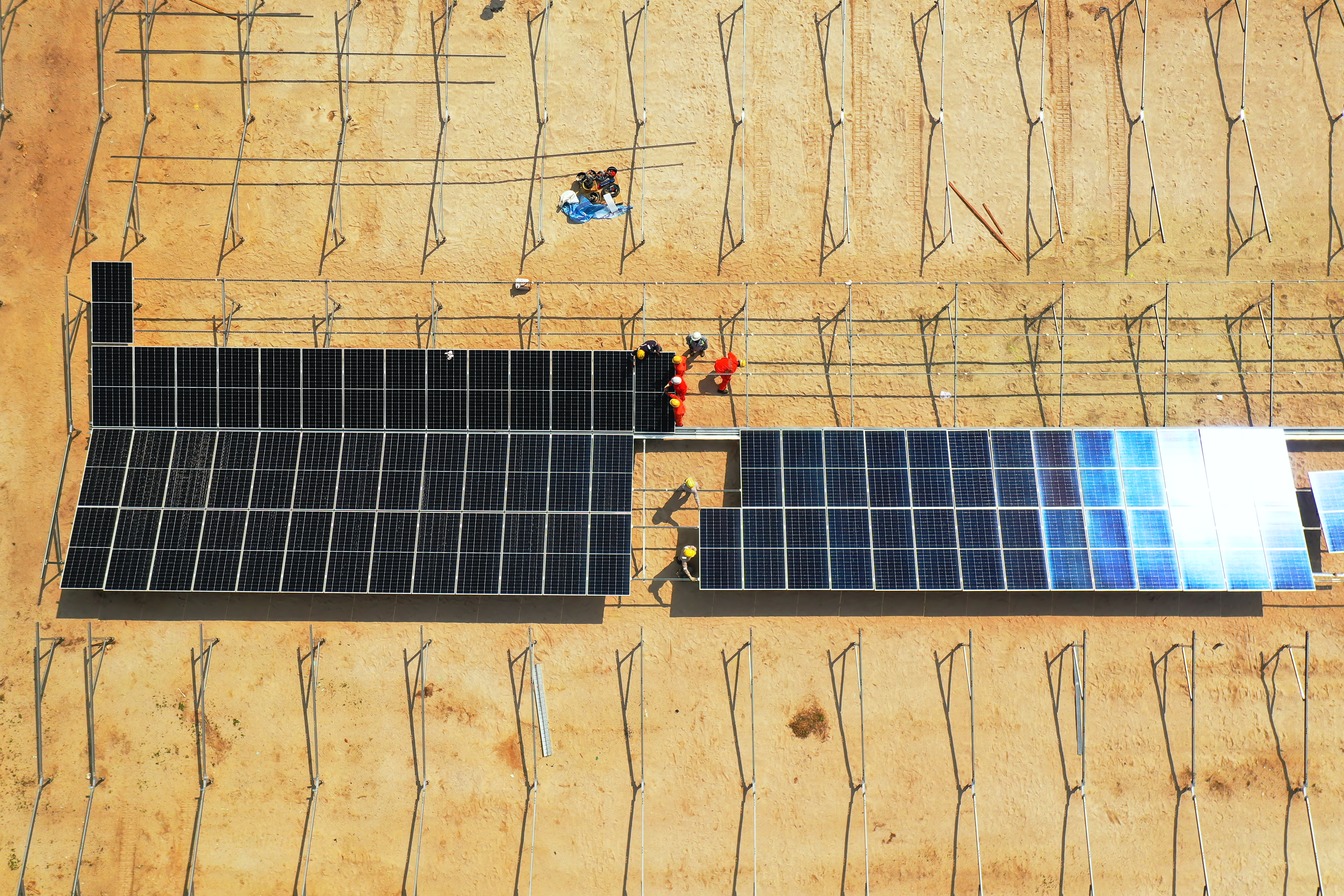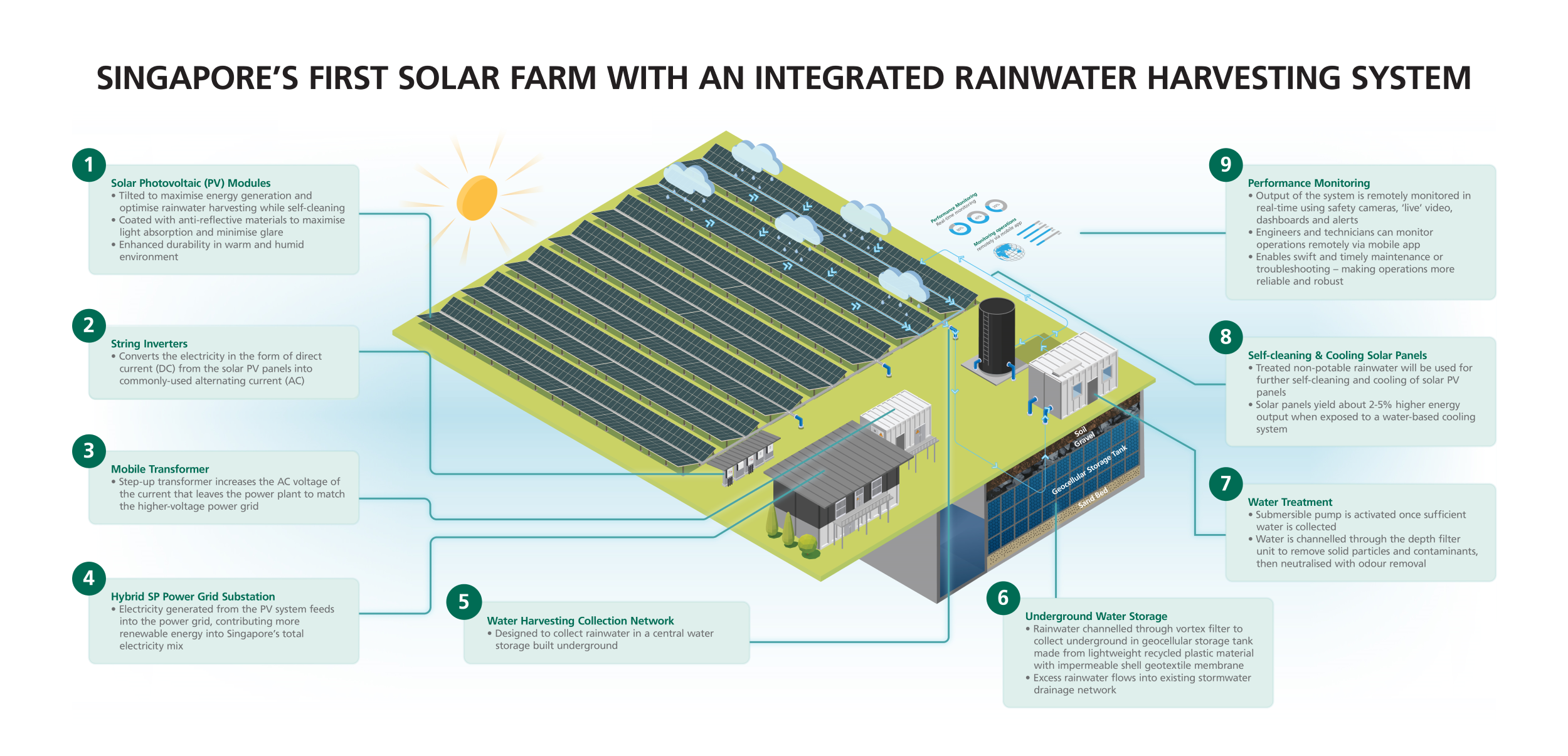Singapore's First Solar Farm with Integrated Rainwater Harvesting System
July 14, 2022
 For a small island nation like Singapore, land is a limited resource. It is no surprise that the country sought ways to use its temporary vacant land to generate clean energy. At Sembcorp, we saw an opportunity for our expertise to help Singapore achieve its long-term net zero emissions aspiration while maximising land use.
For a small island nation like Singapore, land is a limited resource. It is no surprise that the country sought ways to use its temporary vacant land to generate clean energy. At Sembcorp, we saw an opportunity for our expertise to help Singapore achieve its long-term net zero emissions aspiration while maximising land use.
Located in western Singapore, Sembcorp's solar farm in Tuas has a combined solar capacity of 17.6 megawatt-peak (MWp) and sits on close to 10 hectares of temporary vacant land built across two sites.

Modular and ready to be redeployed
Opened in May 2022, a key feature of this solar farm is its modular and flexible design that uses mobile solar panels, a mobile transformer and hybrid substations. This allows the farm to be readily redeployed when the land is needed for other uses.

A total of 33,580 solar panels are installed across both sites, providing renewable energy to the grid. The system can produce about 22,025 megawatt hours of power annually, enough renewable energy to power about 4,681 four-room HDB flats. Avoiding over 8,900 tonnes of carbon dioxide emissions for a year, it is equivalent to planting close to 150,000 trees.
Harvesting solar and rainwater – at the same time
For the system at Tuas Bay Lane, it also incorporates a first-of-its-kind integrated rainwater harvesting system in Singapore. In addition to the generation of solar energy, this system also can collect and treat up to 170,000 cubic metres of rainwater annually, equivalent to filling 68 Olympic-sized swimming pools.

Rainwater is collected via a drainage network built between the solar panel arrays and connected to an underground water storage tank that has been constructed using a geocellular system. The modular nature of geocellular systems means that they can be tailored to suit the specific requirements of any site.
The treated rainwater, which has been neutralised and free of contaminants and odour, is primarily used for non-potable purposes to further clean and cool the solar panels on site. By using a water-based cooling system, it allows the panels to yield about two to five percent higher output energy.
Supporting Singapore Green Plan 2030
With over 2,700 sites in operation in Singapore, we have installed solar panels on the rooftops of commercial buildings and public housing flats, as well as one of the world’s largest inland floating solar photovoltaic systems. As a leading solar energy player, we are proud to support the nation’s target of two gigawatt-peak (GWp) by 2030.
Here are some highlights from the opening ceremony:

